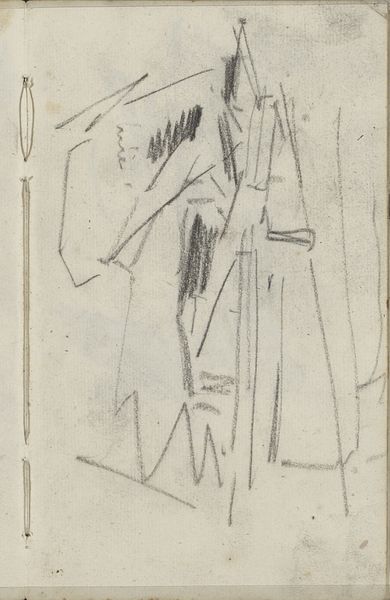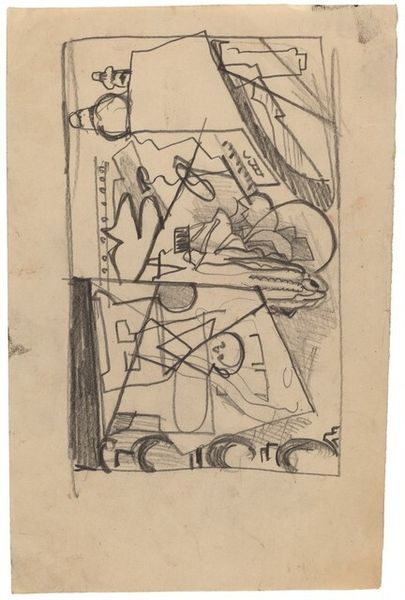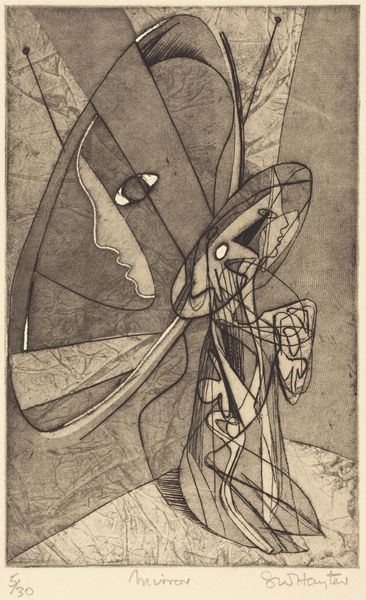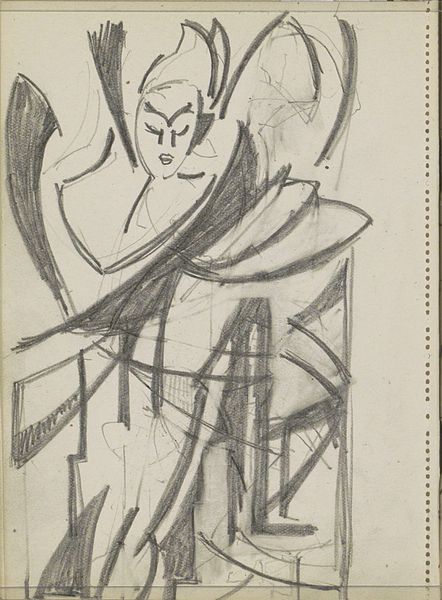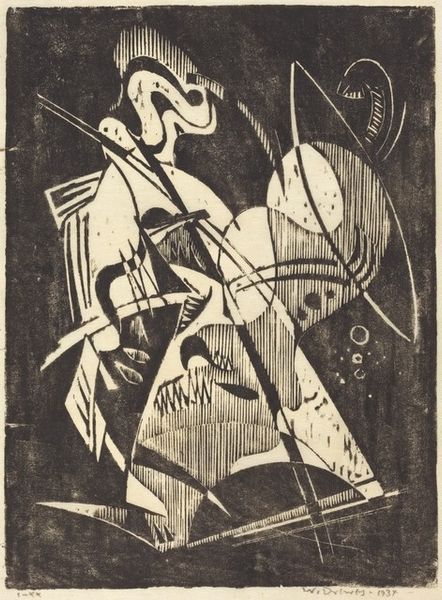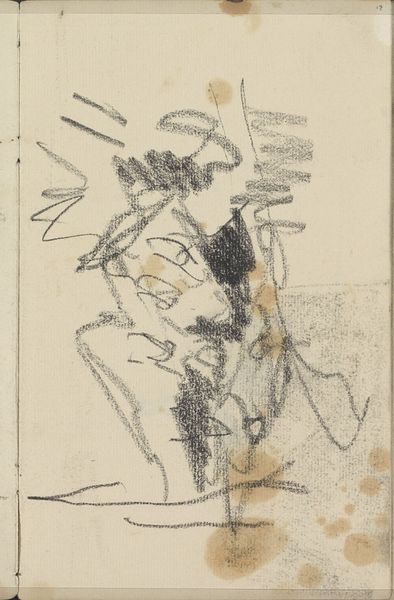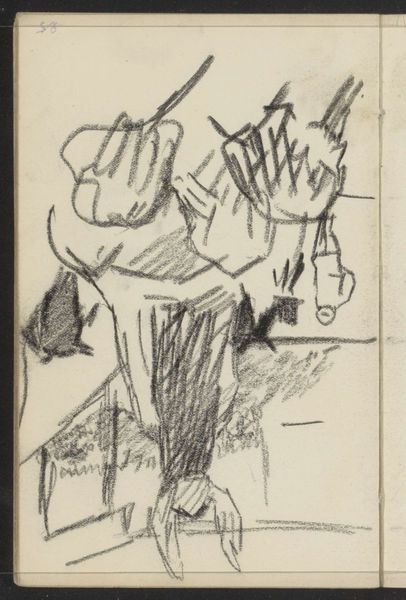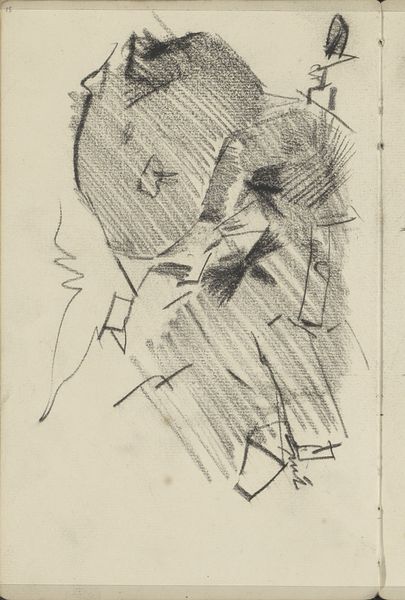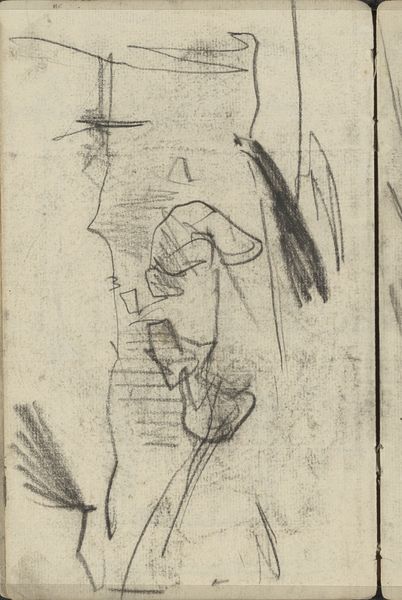
Mähende Frau (Zhnitsa)Vorgebunden zu_ Vozropshchem, St. Petersburg 1913 1913
0:00
0:00
drawing, lithography, pencil, graphite
#
portrait
#
drawing
#
cubism
#
lithography
#
pencil sketch
#
coloured pencil
#
geometric
#
pencil
#
abstraction
#
line
#
graphite
#
futurism
Copyright: Public Domain
Editor: Here we have Kazimir Malevich's "Mähende Frau (Zhnitsa) Vorgebunden zu_ Vozropshchem, St. Petersburg 1913," a drawing with graphite and pencil from 1913. I find the geometric forms layered to create the figure fascinating, almost like a machine woman. What do you make of it? Curator: The interesting element to consider here is the intersection of peasant labor with the aesthetics of the machine age, particularly as presented in Cubo-Futurism. What implications arise when rural agricultural labor is rendered through geometric abstraction, almost like the cogs of a machine? It challenges traditional romantic views of peasantry. The lithographic reproduction methods would have been available, so thinking about production methods: how accessible or exclusive would an image like this have been? Editor: I didn’t think about that... so the way Malevich constructed this peasant woman suggests this almost robotic element through abstraction that removes the idealised rural scene. So, instead of celebrating it he transforms it to mirror an industrialized world? Curator: Exactly. We are prompted to consider the work process, as it transforms the peasant figure into abstracted and machine-like. It certainly asks a broader question of how artistic representation affects perceptions and ultimately the societal conditions of labour. Editor: So, understanding how he used materials like pencil and graphite reveals a message beyond the aesthetic surface and shows how art plays into the societal landscape of labor and even early capitalism. It really makes me think about how even art can either reproduce or disrupt these traditional portrayals. Curator: Precisely. And this type of art certainly provokes more engagement with societal implications than just appreciation.
Comments
No comments
Be the first to comment and join the conversation on the ultimate creative platform.
